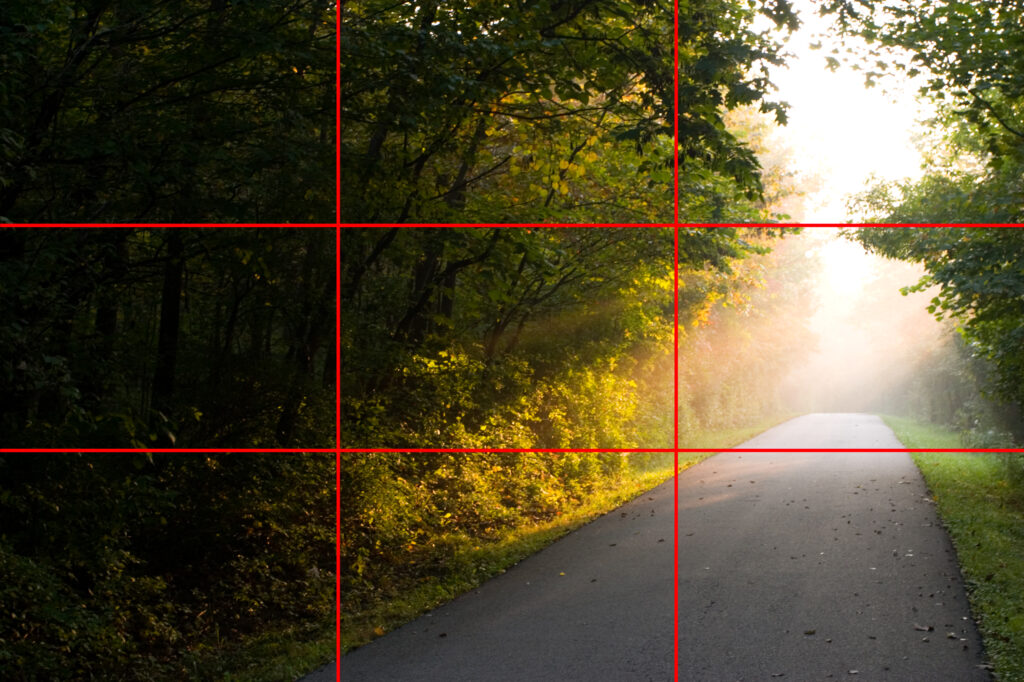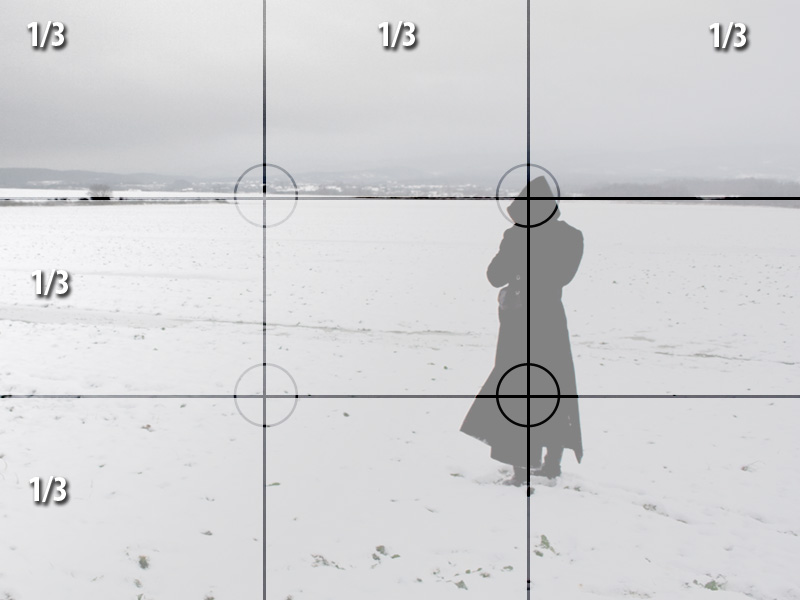The rule of thirds is one of the first rules taught in photography classes, a principle that helps photographers create well-balanced and interesting shots. We’re here to talk about the rule of thirds, when to use it, and when you can break it (yes, there are some instances when you can get away breaking the rule of thirds!). But before you can break the rules, you have to understand them. And remember: Following photography guidelines will help you master photo composition.
What is the Rule of Thirds?
While you are looking at your viewfinder or LCD display on your screen, create a grid in your mind that has nine parts, made by three horizontal lines and three vertical lines. This grid will have four points in the center where the lines intersect. Those four intersections are your points of interest. These points correspond with people’s natural line of sight when they first look at an image, and utilizing these points in your work will help you capture the interest and attention of your viewers naturally and dynamically. These are your points of interest to use when framing your image.
Why Use the Rule of Thirds?
Your photo will be more balanced and interact with your audience most naturally when the points of interest are placed at the intersections of your grid or along the lines. When a subject is placed in either the left or right frame, or even in two thirds of the photo, it creates a movement. But when a photo is placed dead center of the photo, the audience does not experience any movement at all.
In the photo below, you can see red, intersecting lines that act as the guides. The picture is divided into three one-third panels, both horizontal and vertical. The eye naturally follows the flow of the road — starting at the bottom of the middle frame and then moving over to the right frame of the picture. Because the road spans across two thirds of the photo, it creates a natural movement for the eye.
When can you break the Rule of Thirds?
If you have good reason to break the rule of thirds, then do it. A prime example of breaking the rule of thirds is when your subject has perfect symmetry. While the audience tends to look for movement, it is well known that human beings are attracted to others with symmetrical faces and bodies. The same idea can be applied to symmetry found in nature, like a butterfly, snowflake, or a flower.
Another time you can break the rule of thirds is when you feature a shallow depth of field in your image. Why? A shallow depth of field helps create dimension in photos and your eyes will automatically move through a scene that appears to have depth and dimension.
Do you have any instances of when you break the rule of thirds? We would love to hear how you’ve mastered photo composition below! If you’re interested in learning more about photography, consider applying to NYFA’s Photography School today.





